Running Facebook ads can feel like navigating a maze—especially when it comes to bidding. You set up the perfect campaign, target the right audience, and craft compelling creatives… only to see lackluster results. What went wrong?
Chances are, your bid strategy wasn’t aligned with your goals.
In this guide, we’ll break down Facebook’s different bid strategies, reveal insider tips most marketers don’t know, and help you choose the best approach for your campaigns.
Why Your Bid Strategy Matters More Than You Think
Imagine you’re at an auction. Two bidders want the same rare painting:
-
Bidder A throws in random high bids, hoping to outspend everyone.
-
Bidder B studies the auctioneer’s patterns, places strategic bids, and wins at the best price.
Which one are you?
Facebook’s ad auction works similarly. If you blindly throw money at your ads without a smart bid strategy, you’ll either overspend or lose to competitors who bid smarter.
Facebook’s Bid Strategies Explained
Facebook offers several bid strategies, each designed for different campaign objectives. Here’s the breakdown:
1. Lowest Cost (Automatic Bidding)
-
What it does: Facebook spends your budget to get as many results as possible at the lowest cost.
-
Best for: Scaling quickly, broad awareness, or when you’re unsure which bid strategy to use.
The Untold Trick:
-
Lowest Cost works best when your audience is large. If your audience is too narrow, Facebook may struggle to find cheap conversions, leading to higher costs.
Story Time:
Sarah ran a $500/day campaign with Lowest Cost. For the first 3 days, she got amazing ROAS. But suddenly, costs spiked. Why? Her audience was too small, and Facebook exhausted cheap conversions. Solution? She expanded her targeting and added lookalike audiences to keep costs low.
2. Cost Cap (Balanced Control)
-
What it does: Facebook tries to get as many conversions as possible while keeping costs at or below your set limit.
-
Best for: Businesses with strict CPA goals (e.g., e-commerce stores needing a $20 CPA per purchase).
The Untold Trick:
-
Set your cost cap 10-20% higher than your true max CPA. Why? If you set it too tight, Facebook may limit delivery, missing out on high-value buyers.
Story Time:
Mike wanted a 15CPAforhiscoursesales.Heseta15 Cost Cap—but his ads barely spent. He raised it to 18,andsuddenly,salesfloodedinata16 average CPA. Lesson? Give Facebook some breathing room.
3. Bid Cap (Manual Control)
-
What it does: You set the max bid for each conversion. Facebook won’t exceed it.
-
Best for: Advanced advertisers who know their exact bid limits.
The Untold Trick:
-
Bid Cap works best in stable, predictable markets. If competition fluctuates (like during holidays), you might get outbid.
Story Time:
During Black Friday, Lisa used Bid Cap at 5perlead.Butcompetitorswerebidding8—her ads stopped delivering. She switched to Lowest Cost temporarily and regained momentum.
4. Target Cost (Consistent Spending)
-
What it does: Facebook aims for an average cost per result (e.g., $10 per lead).
-
Best for: Businesses needing stable, predictable costs over time.
The Untold Trick:
-
Don’t use Target Cost for new campaigns. It needs historical data to work well. Start with Lowest Cost, then switch after 50+ conversions.
Story Time:
Jake launched a new product and used Target Cost immediately. His costs were all over the place. After switching to Lowest Cost first, then transitioning to Target Cost, his CPA stabilized.
How to Choose the Right Bid Strategy
Ask yourself:
✅ “Do I need speed or stability?”
-
Speed → Lowest Cost (Get quick results)
-
Stability → Target Cost/Cost Cap (Control spend)
✅ “How well do I know my audience?”
-
New audience? Start with Lowest Cost, then refine.
-
Well-known audience? Try Cost Cap or Target Cost.
✅ “Is my campaign time-sensitive?”
-
Flash sale? Lowest Cost for fast delivery.
-
Evergreen offer? Target Cost for consistency.
Pro Tips Most Marketers Miss
1. Let Facebook Learn (Patience Pays)
-
When you change bid strategies, Facebook’s algorithm needs 3-7 days to adjust. Don’t panic if Day 1 looks bad.
2. Use Bid Strategies with the Right Objectives
-
Conversions Campaign? Cost Cap or Target Cost.
-
Traffic Campaign? Lowest Cost (since conversions aren’t the goal).
3. Combine with Budget Optimization
-
Campaign Budget Optimization (CBO) + Lowest Cost = Great for scaling.
-
Ad Set Budgets + Cost Cap = Better for controlled spending.
4. Monitor Frequency & Fatigue
-
If your frequency goes above 3-5, costs may rise. Refresh creatives or adjust bids.
Final Thoughts: Bid Like a Pro
Choosing the right bid strategy isn’t about guessing—it’s about aligning with your goals, audience, and budget.
-
Need quick, aggressive results? Go Lowest Cost.
-
Want predictable costs? Use Target Cost.
-
Have strict CPA limits? Try Cost Cap.
Test, analyze, and refine. The more you understand how bidding works, the more control you’ll have over your ad performance.
Now, go out there and bid like a pro!

